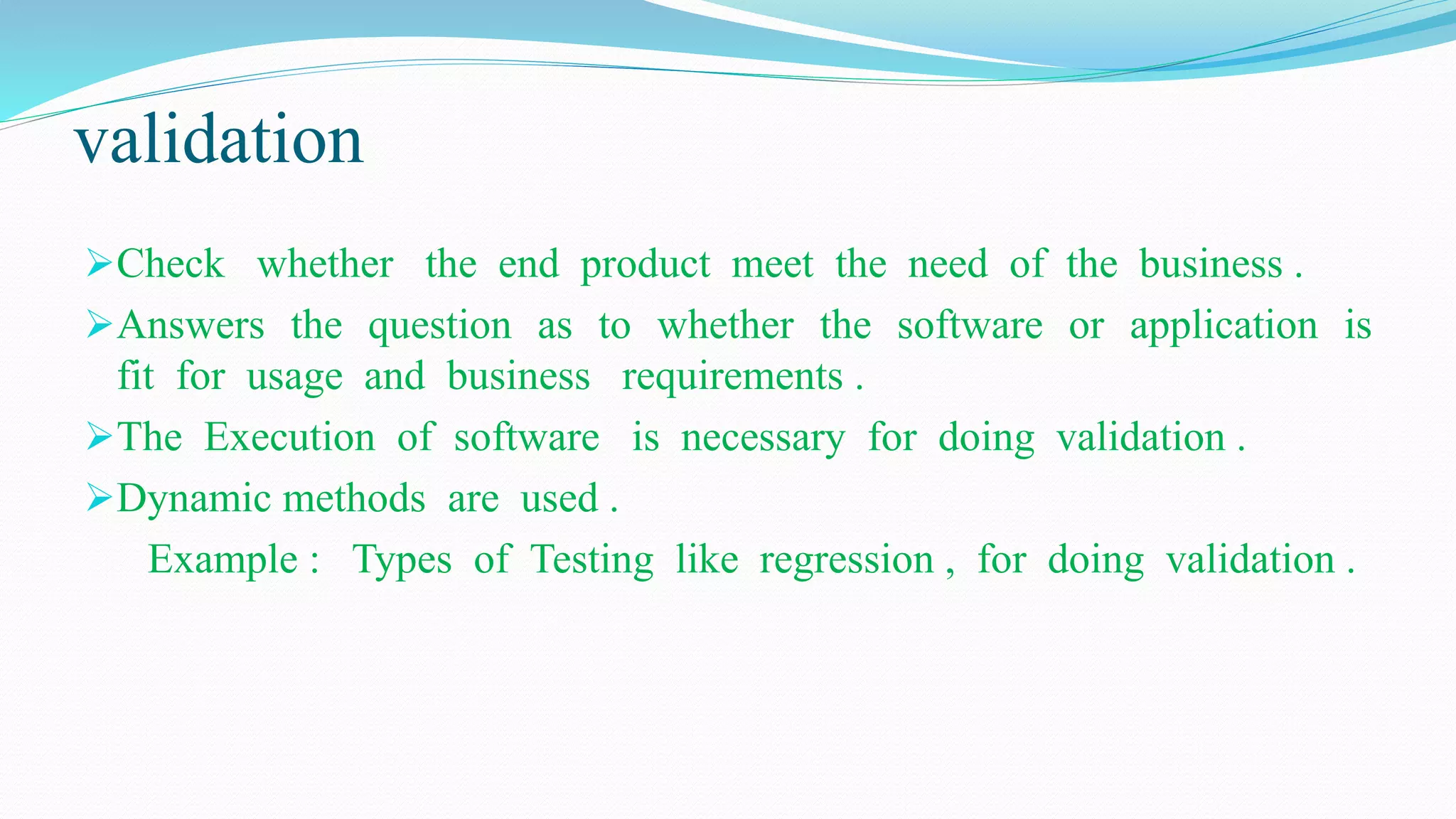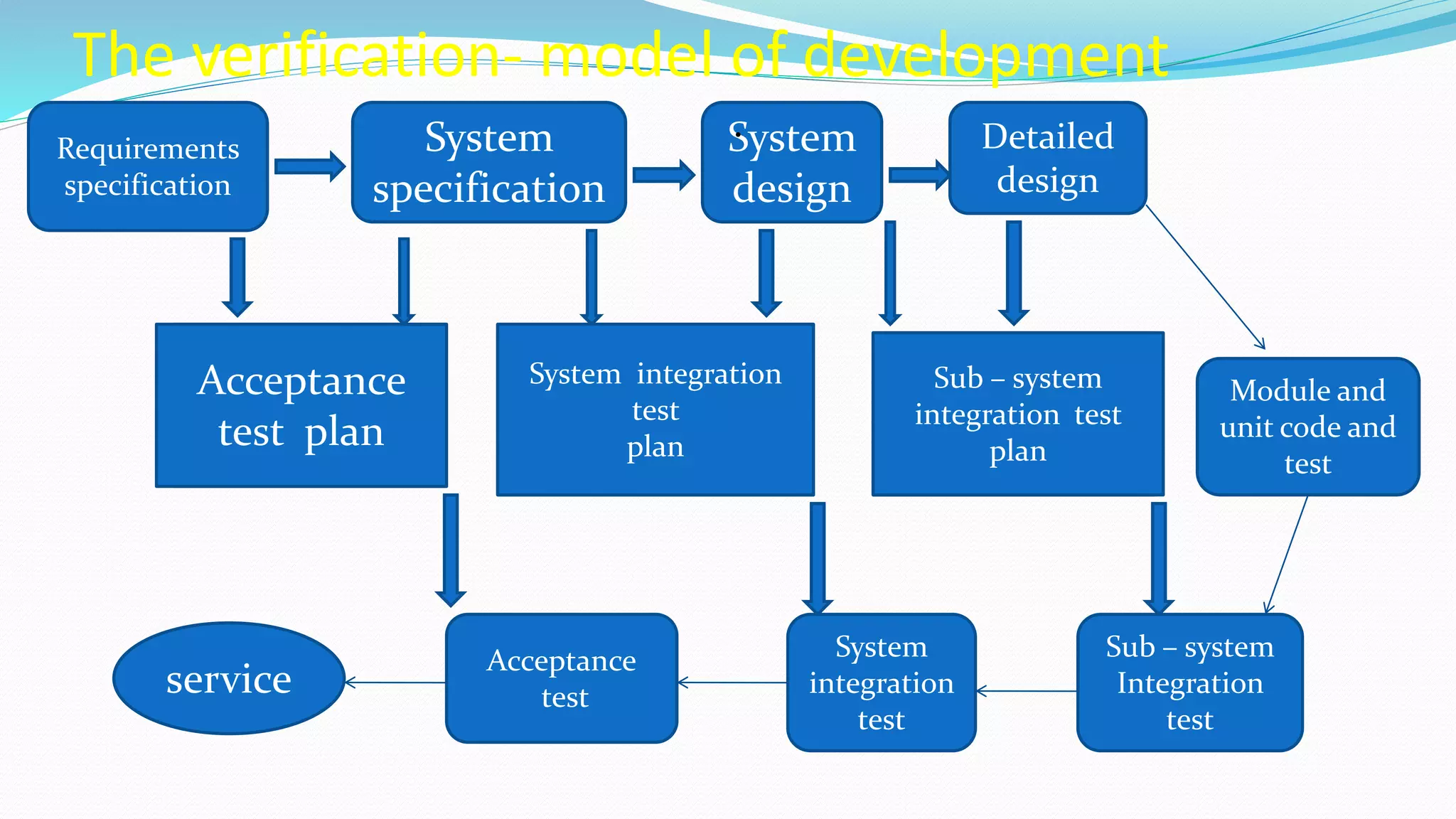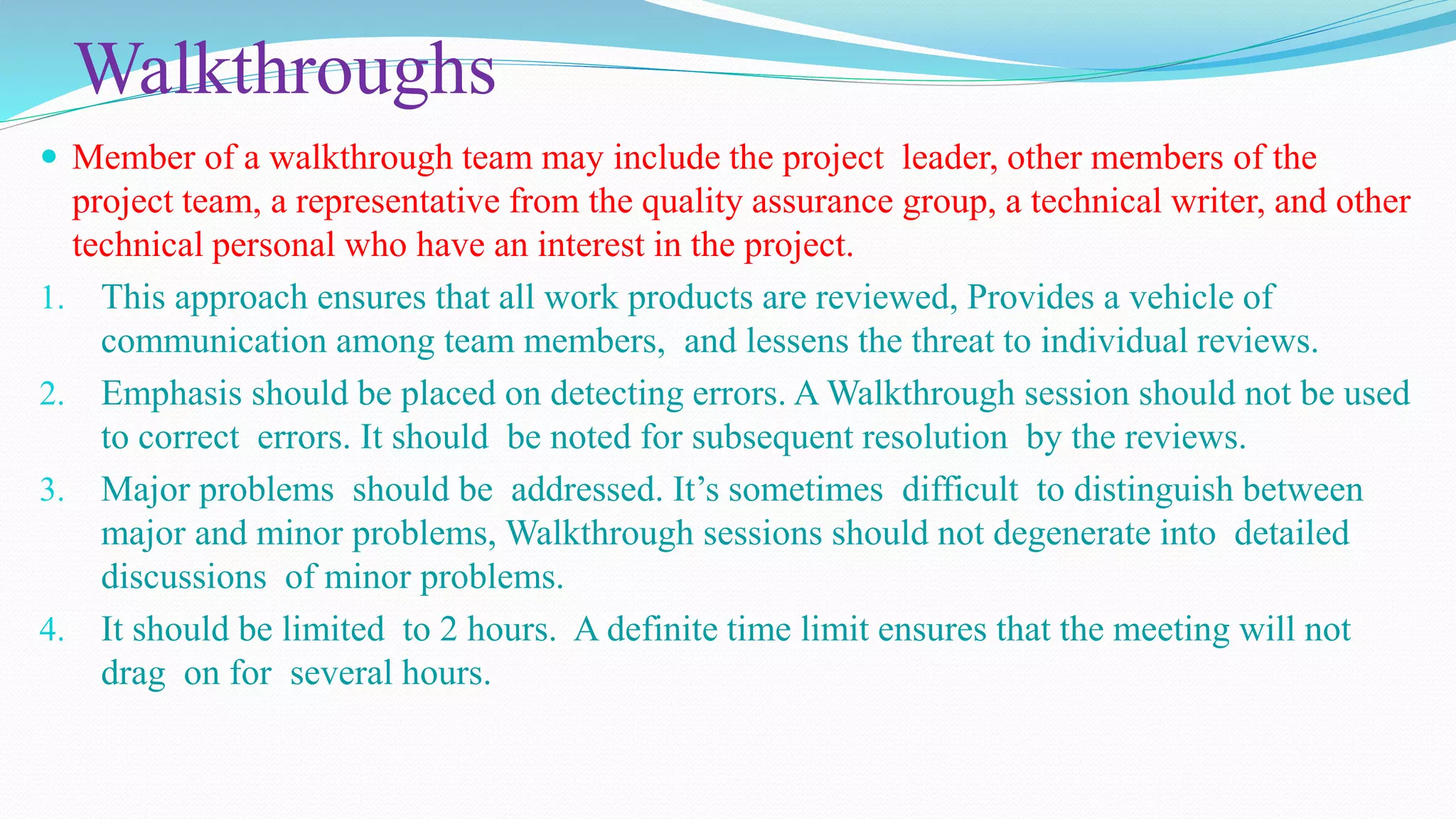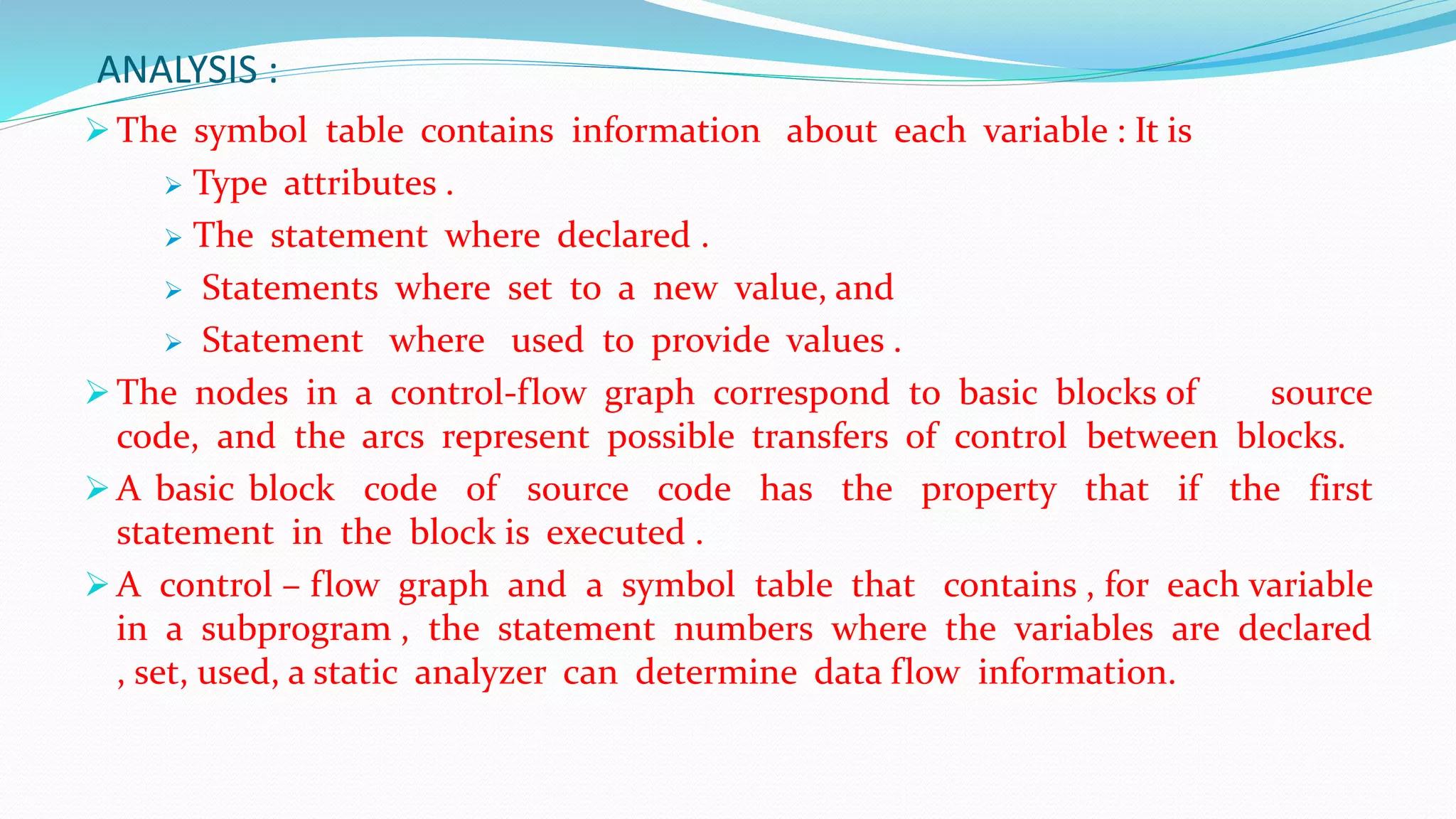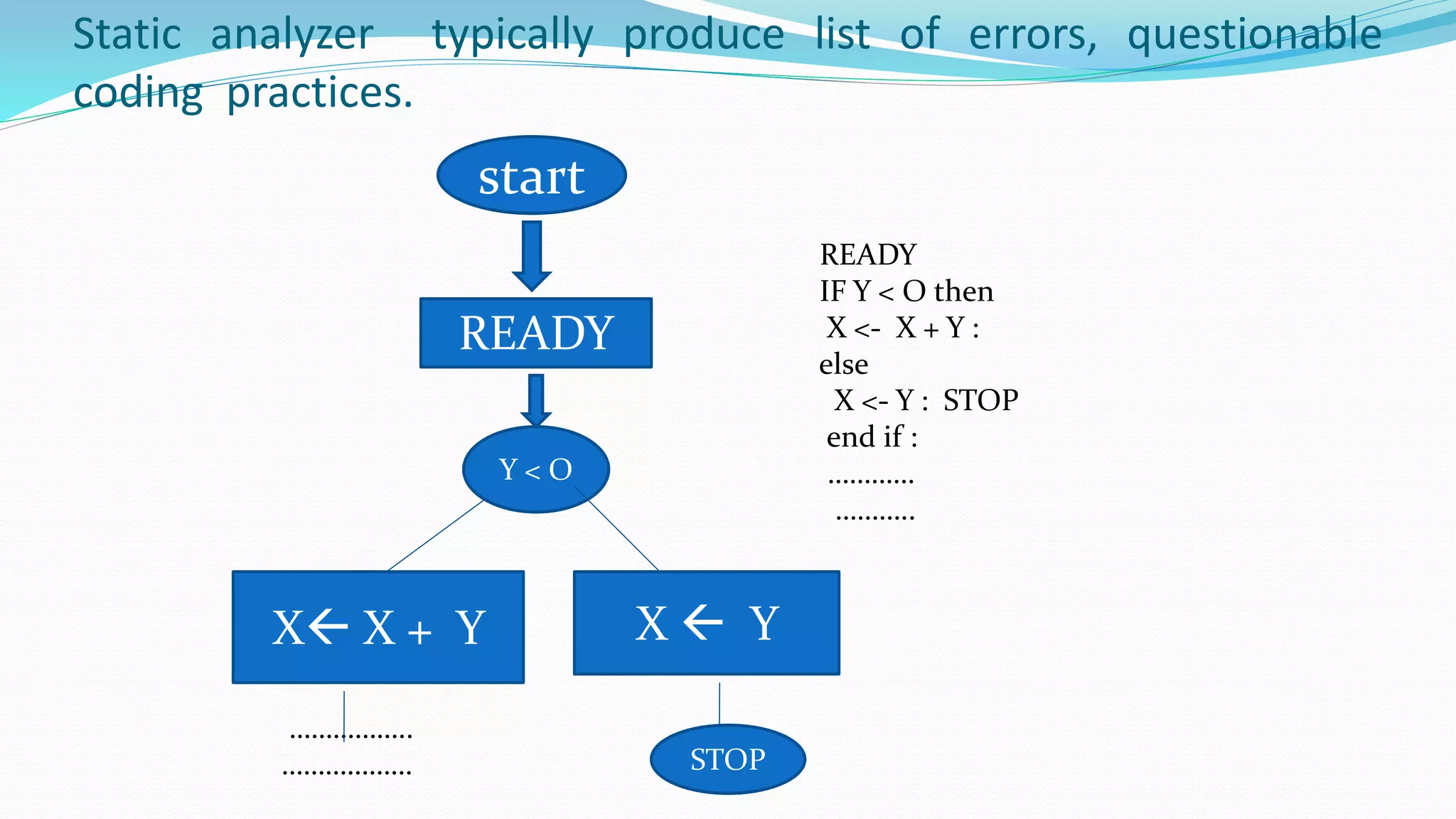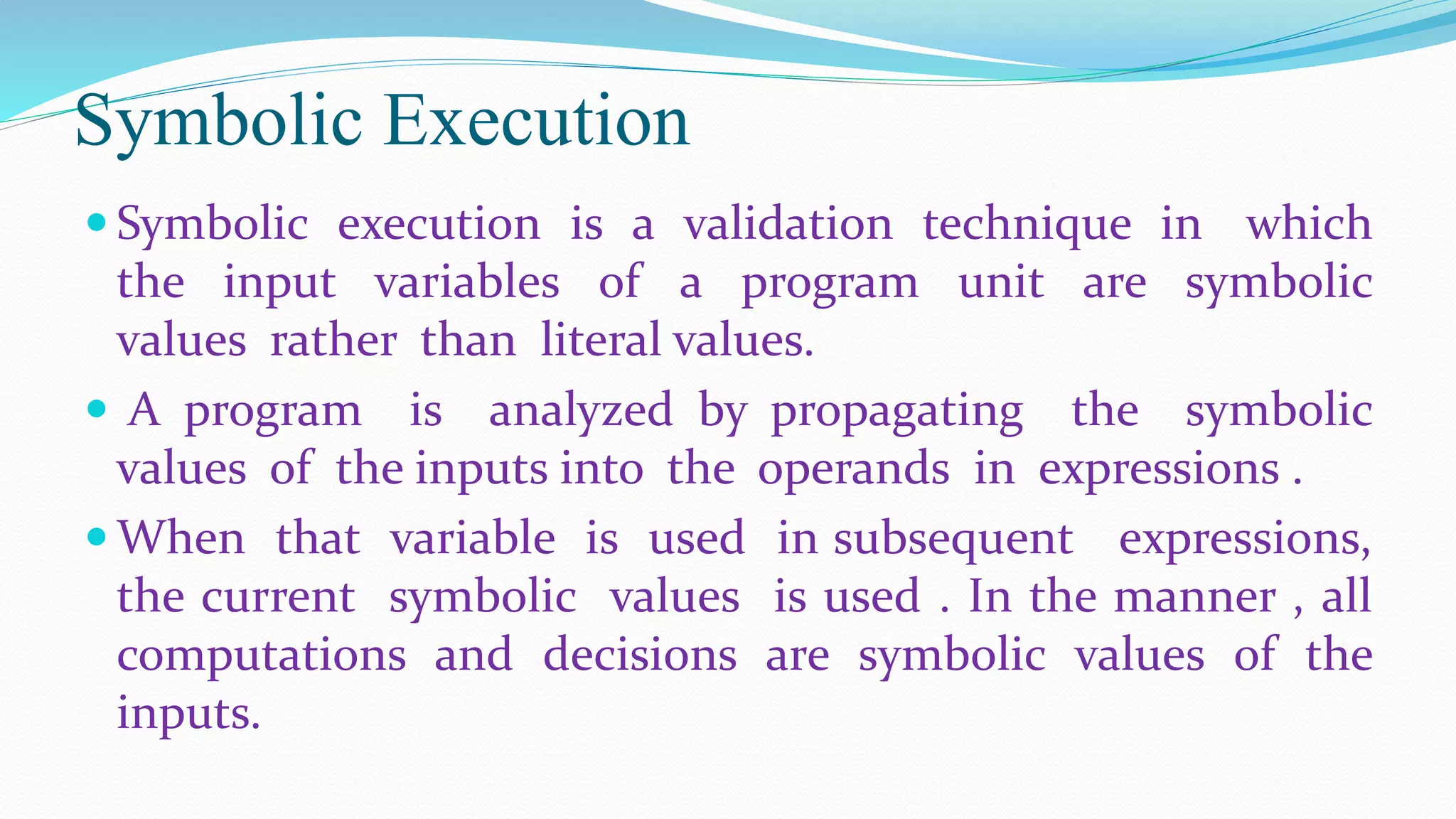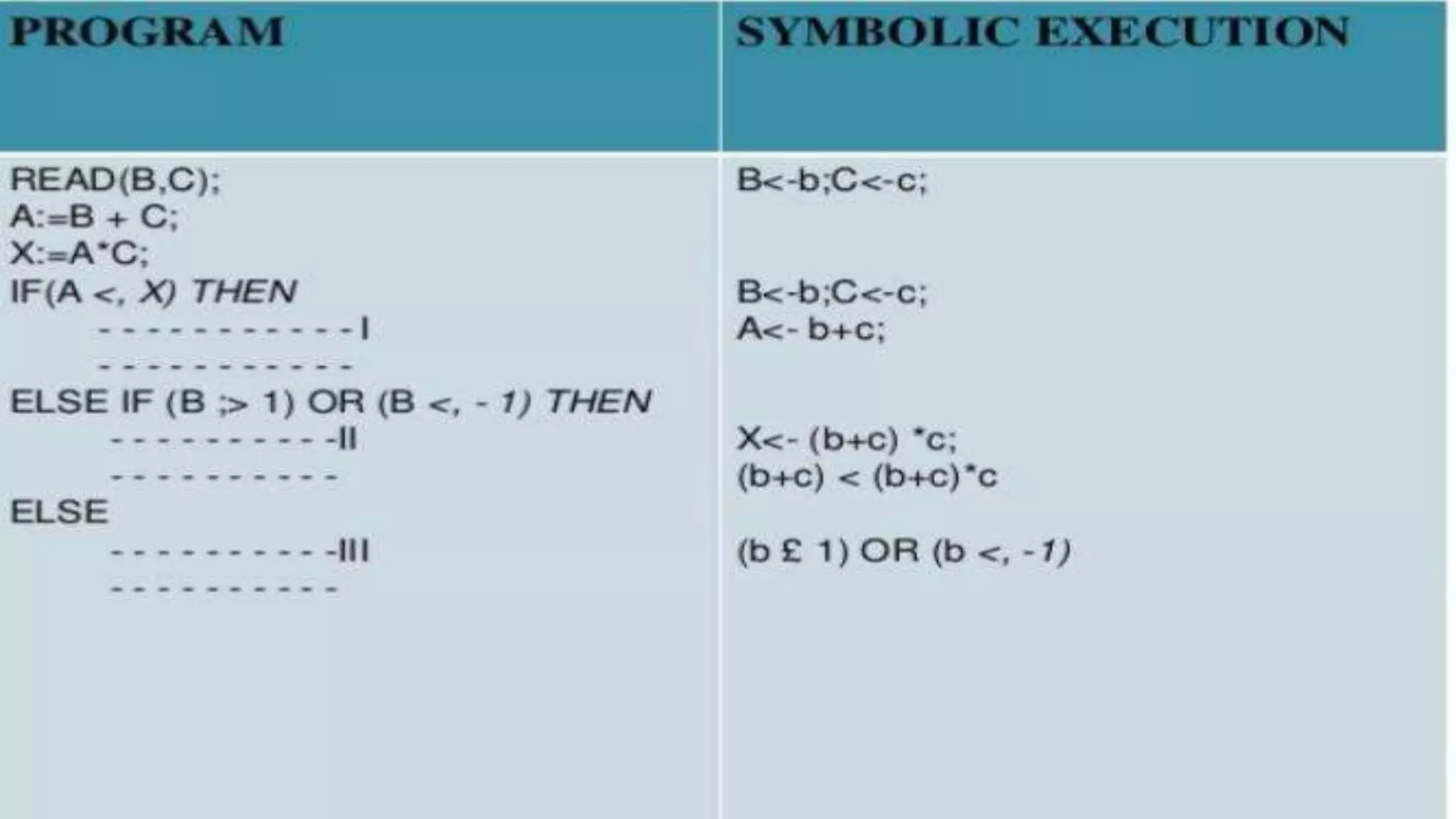This document discusses verification and validation techniques for software quality assurance. It begins by defining verification as ensuring software is built correctly according to specifications, while validation ensures the right product is being built to meet user needs. Several verification techniques are covered, including walkthroughs, inspections, static analysis using symbol tables and control flow graphs, and symbolic execution using symbolic values. The goals of verification and validation are to establish confidence in a software product's fitness for purpose.





